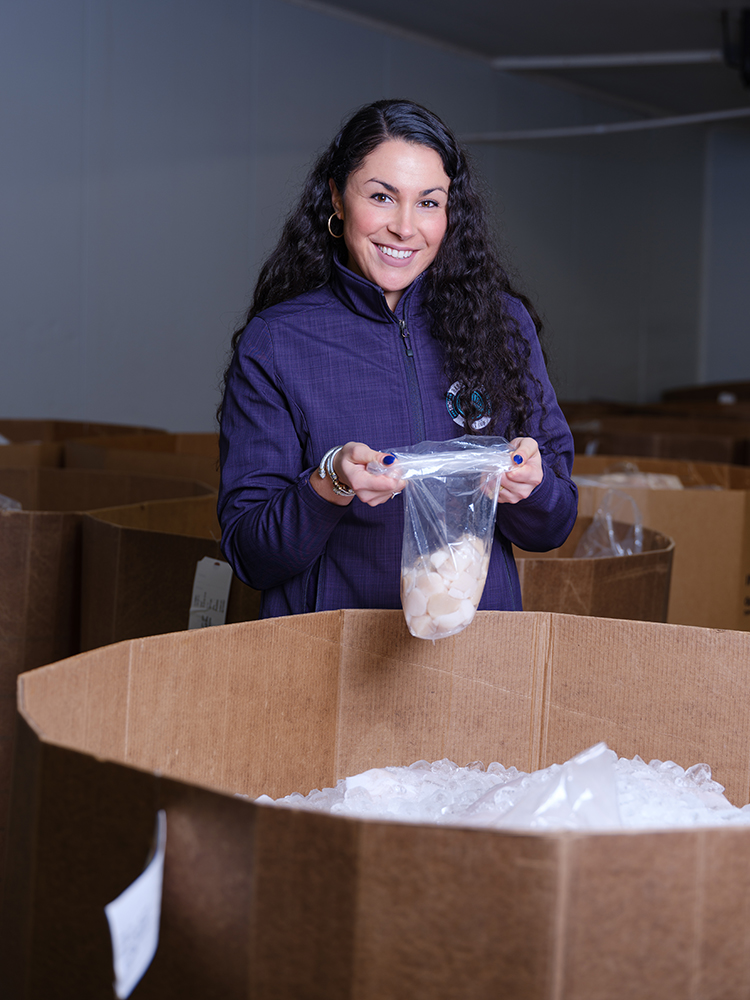
Cassie Canastra
Director, Operations at The Buyers and Sellers Exchange
© Phil Mello
Working Waterfront: Photographic Portraits
Phil Mello focuses on local shoreside workers and their jobs: in processing plants and in fish house offices. Each job is vital to the daily operation of supplying seafood to market. New Bedford has long been a maritime center — from the days of whaling through today, now known as the highest grossing commercial fishing port in America. Mello’s photographs highlight this lasting history of people whose lives and work are tied to the ocean. He began the project in 2008.
Phil Mello se centra en los trabajadores costeros locales y sus trabajos: en las plantas de procesamiento y enlas oficinas de las piscifactorías. Cada trabajo es vital para la operación diaria de suministro de productos del mar al mercado. New Bedford ha sido durante mucho tiempo un centro marítimo, desde los días de la caza de ballenas hasta hoy, ahora conocido como el puerto de pesca comercial con mayores ingresos en Estados Unidos. Las fotografías de Mello destacan esta historia duradera de personas cuyas vidas y trabajos están vinculados al océano. Inició el proyecto en 2008.
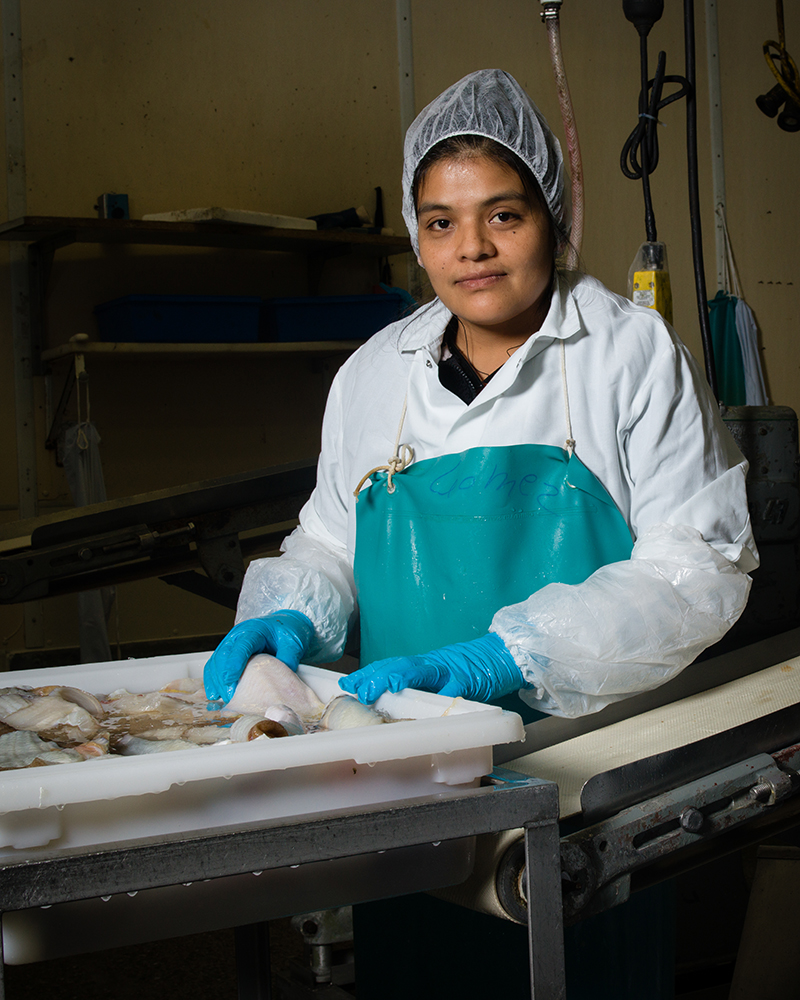
Maria Gomez © Phil Mello
Maria Gomez
Skinning Machine Operator
“I work on the ‘skinning machine’ to clean the fish, pack the fish, everything. The men cut the fish into fillets, and then a man brings you the fish on the side of the machine, then I take them and pass the fish through the machine, one by one. Then the fish goes through and the skin comes off, after that the fish goes into the tub.”
“Trabajo en la ‘máquina desolladora’ para limpiar el pescado, envasar el pescado, todo. Los hombres cortan el pescado en filetes, y luego un hombre le trae el pescado al costado de la máquina, luego los tomo y paso el pescado por la máquina, uno por uno. Luego, el pescado pasa y la piel se desprende, luego el pescado entra en la tina.”
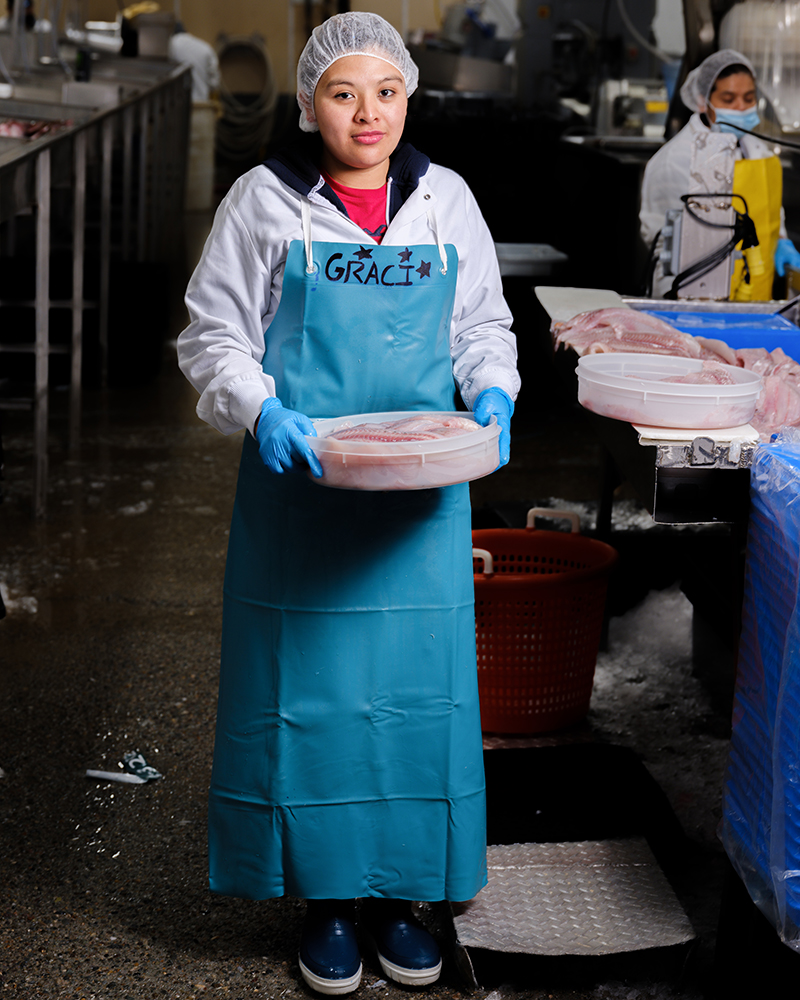

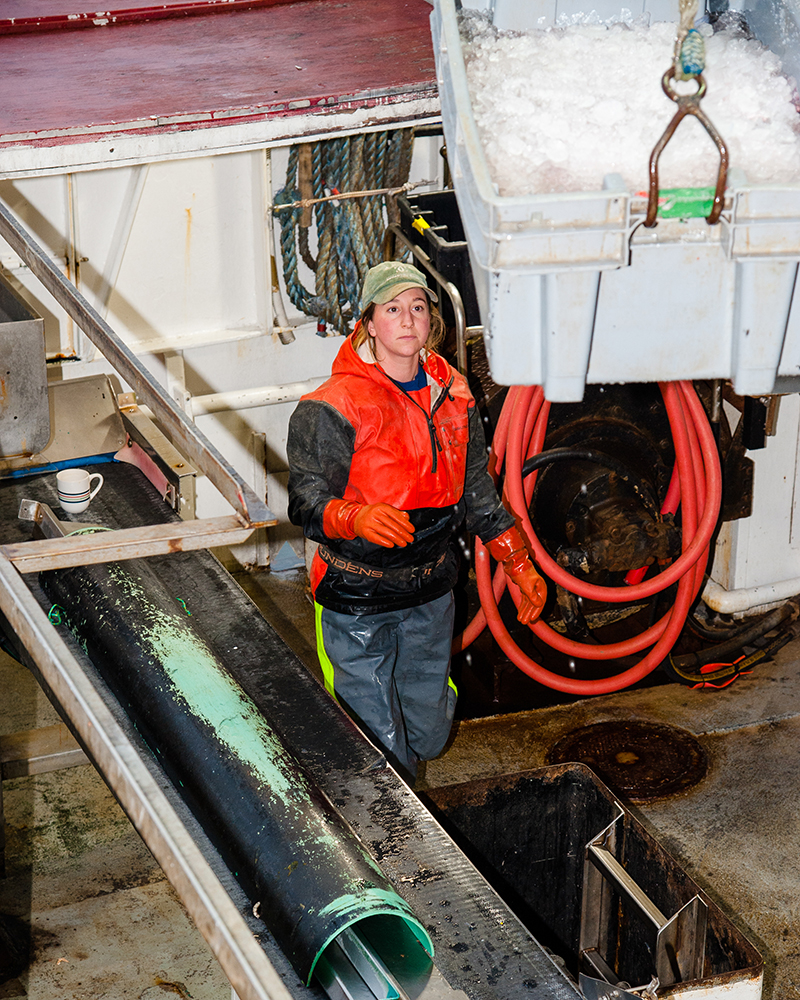
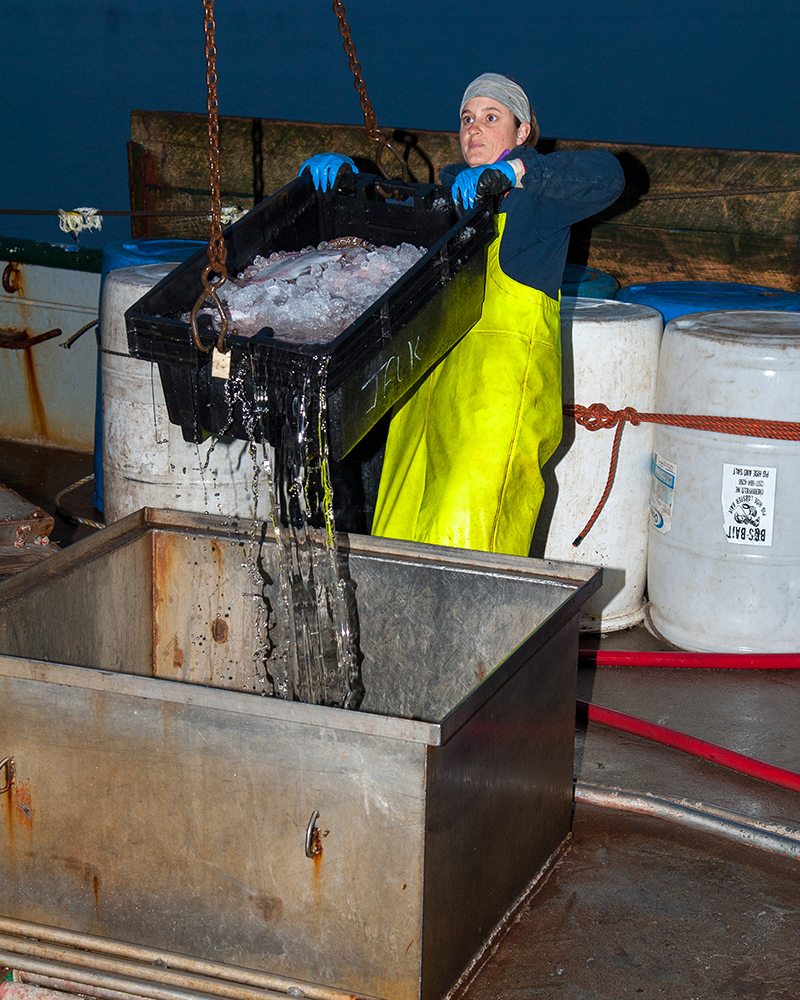
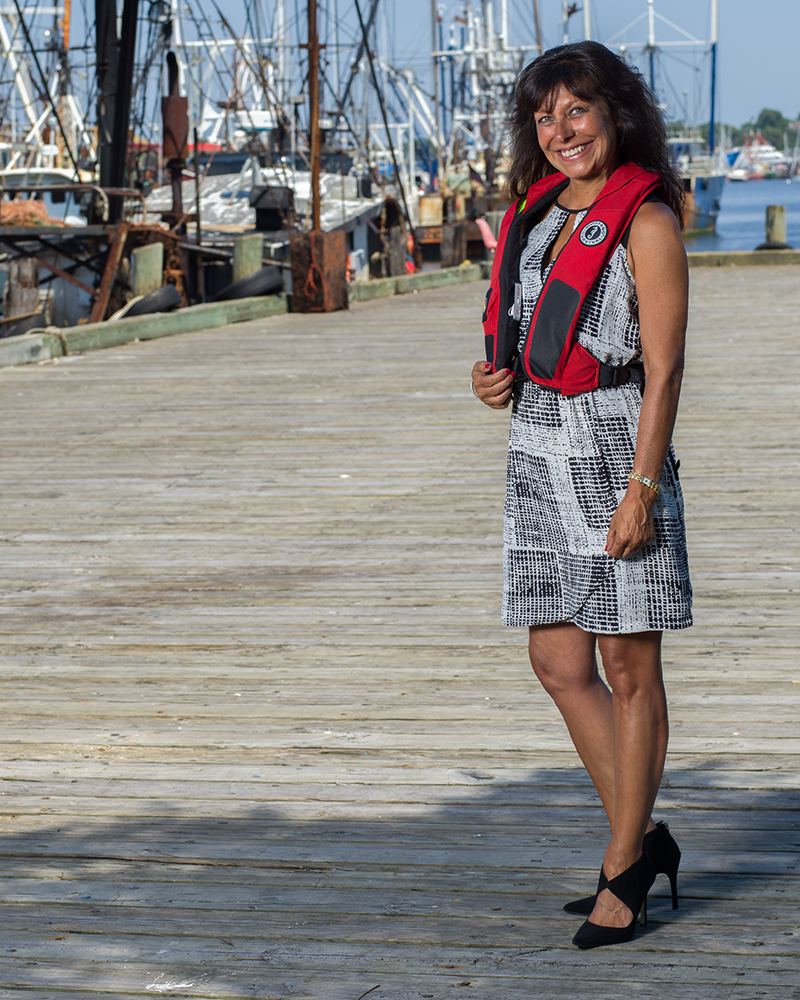





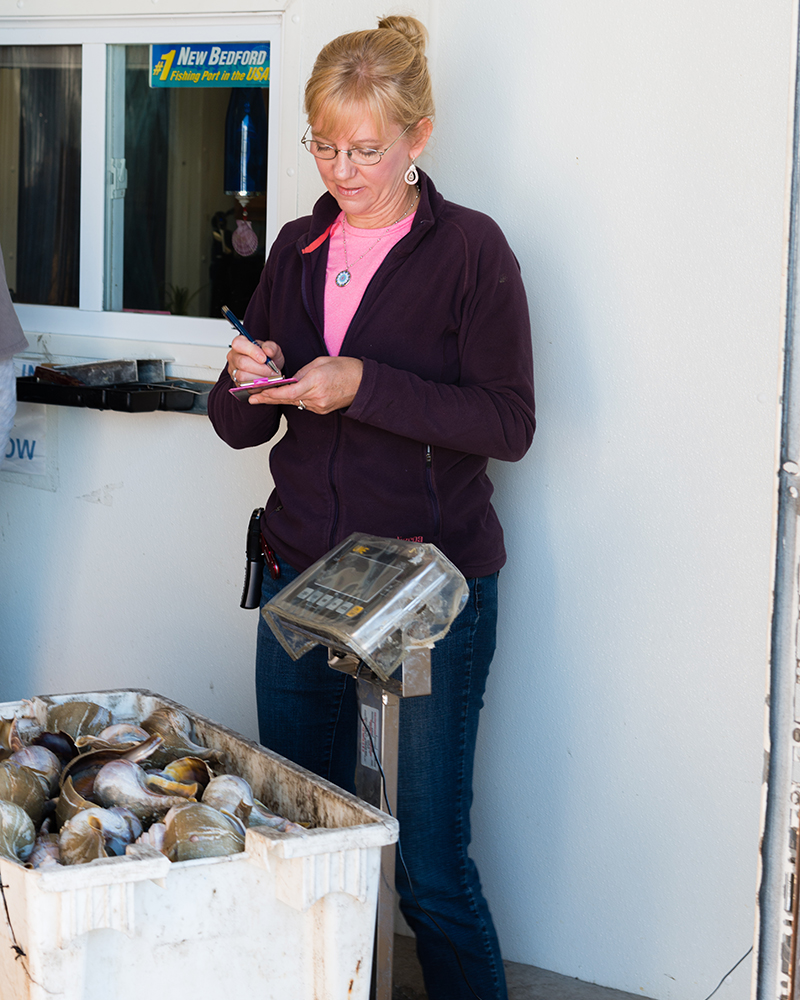
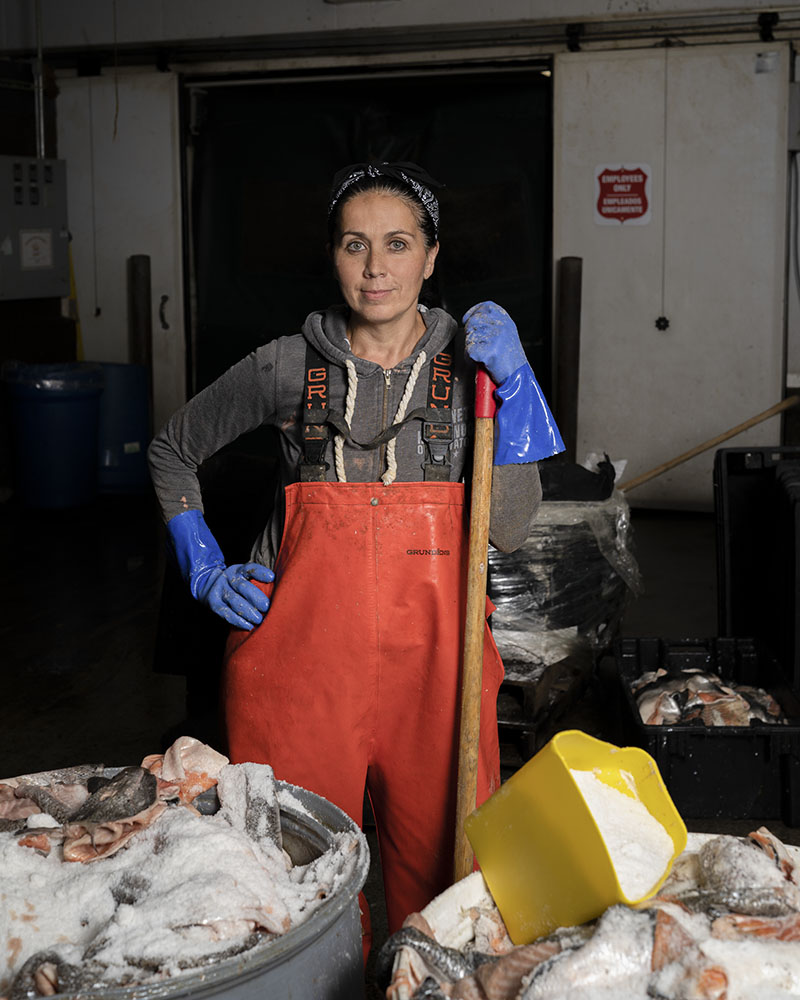
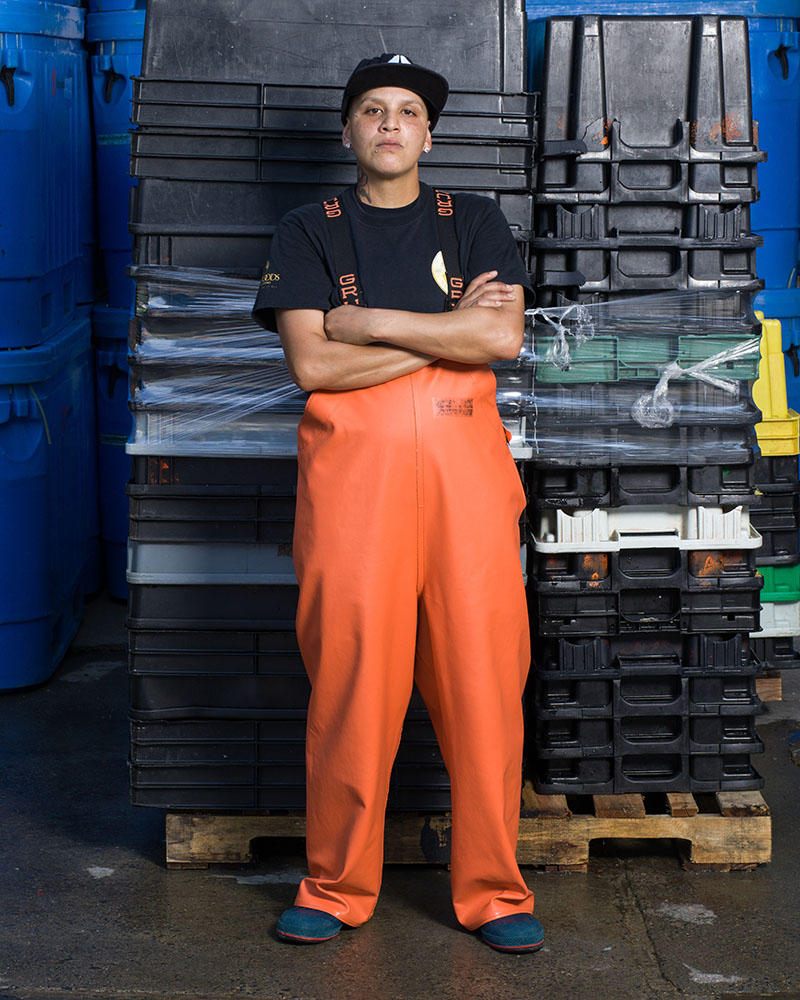
An interview with Virginia Martins conducted by Madeleine Hall-Arber, 2016-11-15
An interview with Natalie Ameral conducted by Madeleine Hall-Arber, 2016-11-15.
An interview with Jacqueline Rua conducted by Madeleine Hall-Arber, 2017-03-23
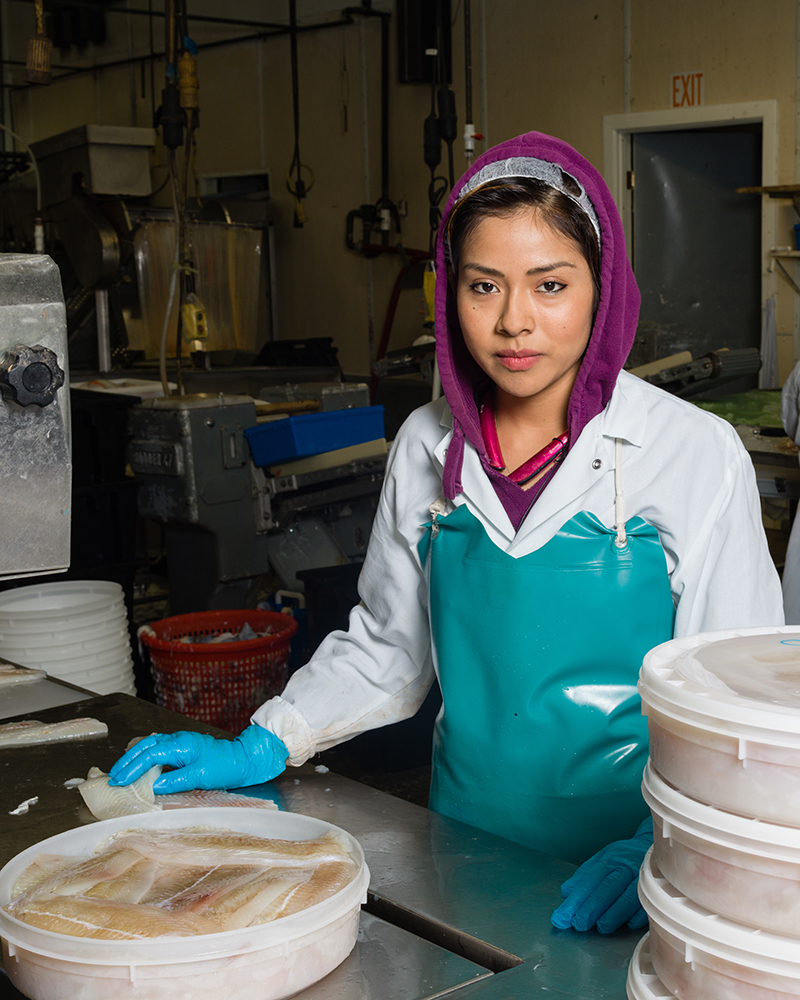
Mariana Moreno © Phil Mello
Mariana Moreno
Seafood Sales Representative (Former Fish House Worker)
“I have always had the mindset that I don’t want to learn just one thing. I want to learn everything and keep on learning. I have learned all of the jobs at Bergie’s: peeling the fish, cutting the fish, working the machines… here it doesn’t matter your age, nor the color of your skin, nor your race. Basically if the person works and is a good worker, they are able to get ahead.”
“Siempre he tenido la mentalidad de que no quiero aprender una sola cosa. Quiero aprender todo y seguir aprendiendo. He aprendido todos los trabajos en Bergie’s: pelar el pescado, cortar el pescado, manejar las máquinas… aquí no importa tu edad, ni el color de tu piel, ni tu raza. Básicamente, si la persona trabaja y es un buen trabajador, puede salir adelante.”
An interview with Mariana Moreno conducted by Corinn Williams, 2017-06-10
To learn even more about New Bedford’s waterfront industries, visit the New Bedford Fishing Heritage Center, where they have both online and in-person exhibitions providing a deep-dive into fishing today. This is the 2nd year in a row that DATMA’s exhibitions have benefited from the resources at the Fishing Heritage Center who help the public understand and appreciate New Bedford’s commercial fishing community.
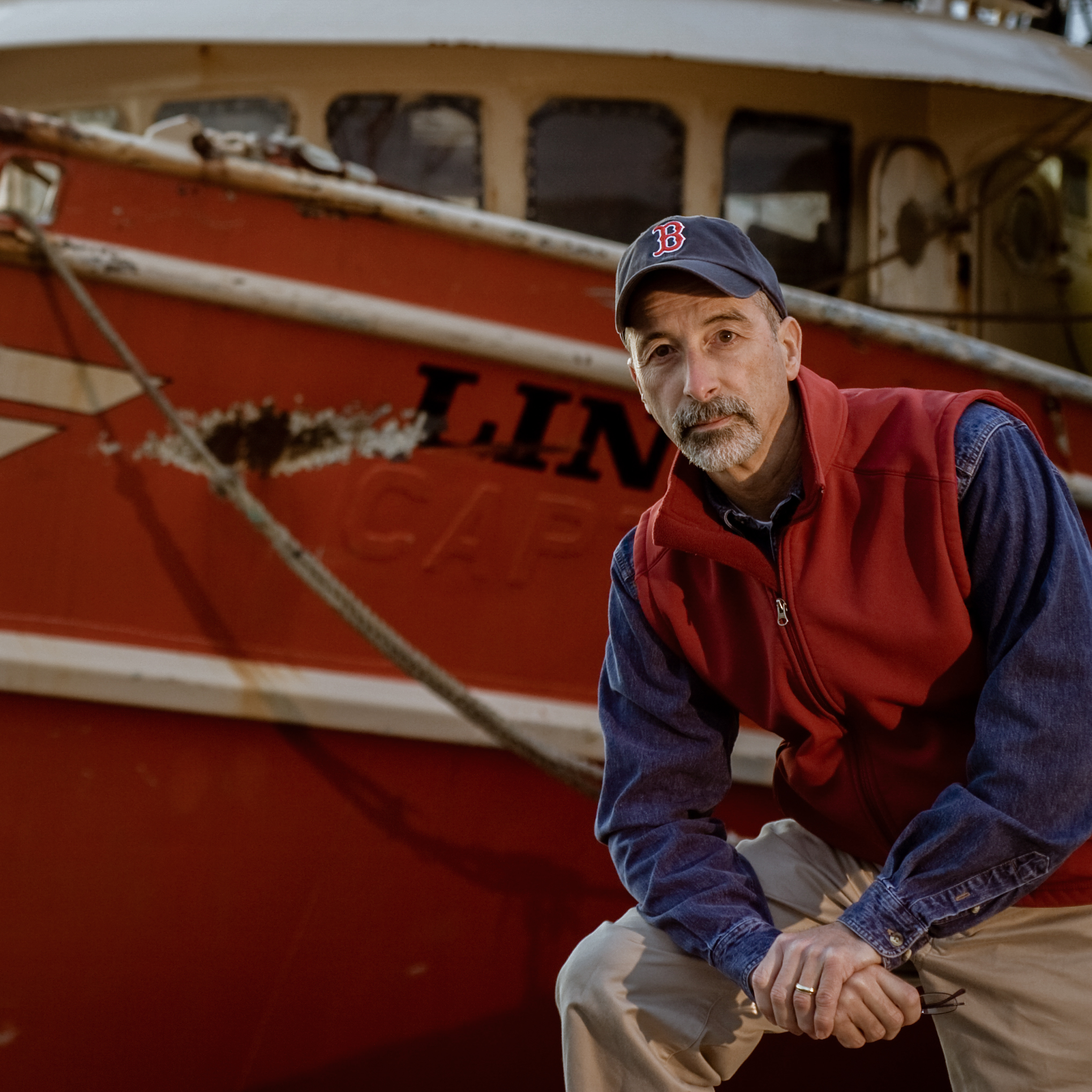
Artist’s portrait © Phil Mello
About Phil Mello:
Phil Mello is Plant Manager at Bergie’s Seafood in New Bedford, former president of the New Bedford Port Society (2008-2012), and former Board Chair of the Fishing Heritage Center. He has been taking photographs of fellow workers on the waterfront since 1975. His work has been showcased at the New Bedford Whaling Museum (2009), at the New Bedford Fishing Heritage Center (2017), and at the Library of Congress in Washington D.C. (on view since 2019). Phil’s latest work-in-progress is a book of photographs that documents the lives of a dozen people living out the winter on Cuttyhunk, the tiny, outermost island of the Elizabeth Islands chain southwest of New Bedford. Cuttyhunk was perhaps one of the first English settlements, a small outpost occupied for a time in 1602 for the harvest of Sassafras.
“I was inspired back in the early 2000s by photographs I saw at the New Bedford Whaling Museum. I’d go in and see pictures of sailmakers, pictures of barrel makers, photos of someone putting try works on a whaling ship. And I said, ‘Ya know, we have the same thing here in the fishing industry.’ There’s always different jobs that connect to it; it’s not just the fishing.“
His original exhibit at the Whaling Museum in 2009 was all black-and-white photographs. He continues today to photograph New Bedford people working in the industry. “I know everyone in the industry, so people don’t mind me walking into a plant with a camera. That helped out a lot. These are all regular people; they’re proud of their jobs and proud of their work.”
Listen to photographer, Phil Mello’s audio interview archived at the Library of Congress in a project produced by the New Bedford Fishing Heritage Center.
Acerca de Phil Mello:
Phil Mello es Gerente de Planta en Bergie’s Seafood en New Bedford, presidente de la Sociedad Portuaria de New Bedford y ex presidente de la Junta Directiva del Centro del Patrimonio Pesquero. Ha estado tomando fotografías de compañeros de trabajo en el paseo marítimo desde 1975. Su trabajo se ha exhibido en el New Bedford Whaling Museum (2009), en el New Bedford Fishing Heritage Center (2017) y en la Biblioteca del Congreso en Washington DC ( a la vista desde 2019). El último trabajo en progreso de Phil es un libro de fotografías que documenta la vida de una docena de personas que viven el invierno en Cuttyhunk, la pequeña isla más externa de la cadena de islas Elizabeth al suroeste de New Bedford. Cuttyhunk fue quizás uno de los primeros asentamientos ingleses, un pequeño puesto avanzado ocupado durante un tiempo en 1602 para la cosecha de Sassafras.
“Me inspiraron a principios de la década de 2000 las fotografías que vi en el New Bedford Whaling Museum. Entraba y veía fotos de fabricantes de velas, fotos de fabricantes de barriles, fotos de alguien probando obras en un barco ballenero.
Y dije: ‘Ya sabes, tenemos lo mismo aquí en la industria pesquera. Siempre hay diferentes trabajos que se relacionan con él; no es solo la pesca.”
Su exhibición original en el Museo Ballenero en 2009 consistía en fotografías en blanco y negro. Hoy continúa fotografiando a las personas de New Bedford que trabajan en la industria. “Conozco a todos en la industria, por lo que a la gente no le importa que entre en una planta con una cámara. Eso ayudó mucho. Todas estas son personas normales; están orgullosos de su trabajo y orgullosos de su trabajo.”
